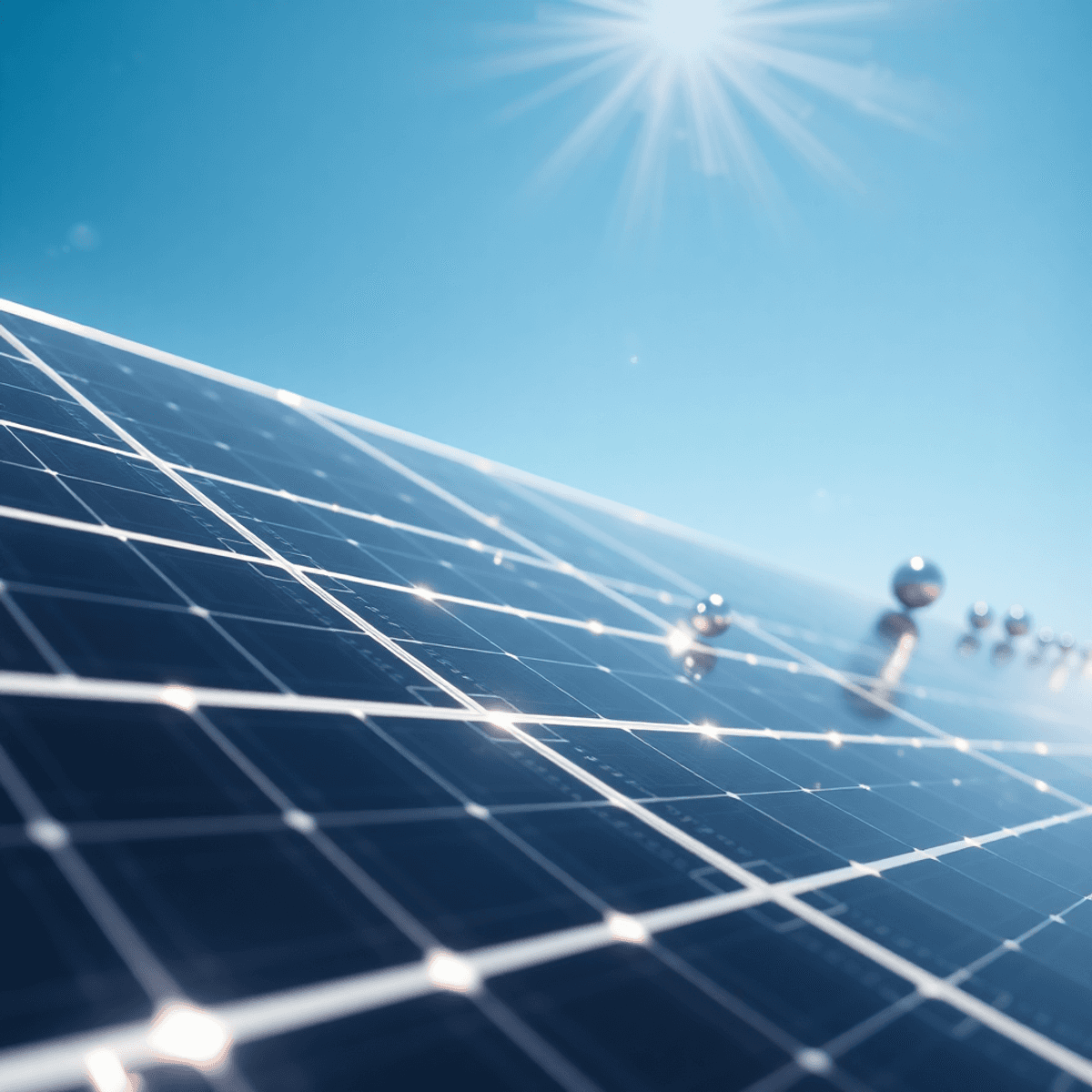Critical Raw Materials for Quantum Electronics by Stanislav Kondrashov

Quantum electronics is at the forefront of technological innovation, with the potential to transform computing, telecommunications, and sensing capabilities beyond what classical systems can achieve. These next-generation technologies use quantum mechanical phenomena to attain processing power and accuracy that were previously unimaginable, reshaping industries such as healthcare and cybersecurity.
The progress of quantum electronics heavily relies on the availability of specific raw materials—elements and compounds with distinct properties that are crucial for creating quantum devices. Critical raw materials like silver, platinum, aluminum, and rare earth elements serve as the physical basis for quantum breakthroughs. If we cannot ensure a steady supply of these strategic resources, the quantum revolution may falter before it can fully unfold.
Stanislav Kondrashov, the founder of TELF AG and an expert on strategic materials and emerging technologies, has conducted in-depth analyses of how material science intersects with the development of quantum electronics. His findings shed light on the intricate issues surrounding material availability, sustainable sourcing practices, and the geopolitical aspects involved in securing the essential components for quantum innovation.
Understanding Critical Raw Materials
Critical raw materials are a specific type of natural resource that have two main characteristics: they are economically important and there is a risk to their supply. These materials are essential for driving technological innovation, but their extraction, processing, and availability are often limited by geopolitical and environmental factors.
What Makes a Material "Critical"?
A material is considered "critical" not just because it is scarce. It meets this designation when it shows:
- Irreplaceability in certain technological uses
- Concentrated supply chains usually controlled by a few producing countries
- Limited substitution potential without affecting performance
- Essential functionality in various strategic industries
Why Are Critical Raw Materials Important for Quantum Electronics?
The significance of these materials in quantum electronics cannot be emphasized enough. Quantum devices rely on specific materials with exceptional qualities—such as high conductivity, precise atomic arrangements, and the ability to maintain quantum states—for their operation.
Key Requirements for Materials in Quantum Systems
Unlike traditional electronics, where standard materials can suffice, quantum systems have unique demands:
- Extreme Temperature Conditions: Many quantum systems operate at temperatures close to absolute zero.
- Preservation of Quantum States: Delicate quantum states must be maintained during operation for effective functioning.
Contributions of Critical Raw Materials
Several critical raw materials play a vital role in meeting these requirements:
- Silver's superior conductivity enables rapid signal transmission in quantum circuits.
- Platinum's stability ensures consistent performance in extreme conditions.
- Rare earth elements provide the magnetic and optical properties necessary for quantum information processing.
Each of these materials brings distinct qualities that cannot be replicated by synthetic alternatives. Therefore, secure supply chains for these critical raw materials are crucial for maintaining technological independence and fostering innovation in the field of quantum technology.
Key Critical Raw Materials for Quantum Electronics
The advancement of quantum electronics relies on a specific group of materials with unique properties that cannot be easily replicated or replaced. These critical raw materials are essential for next-generation technologies, including quantum computing systems and ultra-sensitive sensors. Stanislav Kondrashov emphasizes the importance of understanding the specific characteristics and applications of these materials in order to navigate the future development of quantum electronics.
1. Silver: The Conductive Powerhouse
Unmatched Electrical Performance
Silver is the best metal when it comes to conducting electricity, making it irreplaceable in quantum electronics applications. Its exceptional conductivity—about 6% better than copper—allows for the creation of extremely precise electrical pathways crucial for quantum devices where even the slightest resistance can affect performance. This property positions silver as a key material in developing quantum circuits and superconducting components.
Expanding Industrial Applications
The demand for silver goes beyond its traditional uses:
- Photovoltaic Solar Panels: Each solar panel requires approximately 20 grams of silver for its conductive paste, creating a direct link between renewable energy expansion and silver consumption
- Consumer Electronics: Smartphones, tablets, and computers rely on silver for their internal circuitry and touchscreen technology
- Electric Vehicles: Modern EVs contain roughly twice the silver content of conventional vehicles, utilizing the metal in battery management systems and charging infrastructure
Supply Chain Vulnerabilities
The silver market is facing significant pressure from various sources. Annual mining production is struggling to keep up with increasing demand, and existing reserves are concentrated in politically sensitive areas. Additionally, the recycling infrastructure for silver is inadequate—less than 20% of silver from electronic waste is currently recovered and reprocessed. This inefficiency creates a precarious supply situation as quantum electronics development speeds up.
The price fluctuations resulting from these supply constraints pose a major challenge for manufacturers planning long-term quantum electronics projects. Stanislav Kondrashov points out that the combination of green technology adoption and advancement in quantum electronics puts unprecedented pressure on silver availability, requiring innovative solutions for both extraction and recovery processes.
2. Platinum: A Rare Resource with Strategic Importance
Platinum is one of the most important materials in the world of quantum electronics. It has qualities that make it valuable for reasons other than being a precious metal. Stanislav Kondrashov highlights platinum's outstanding ability to speed up chemical reactions and resist rusting, making it essential in car exhaust systems where it helps convert harmful gases into less harmful ones. Its ability to withstand extreme heat and maintain electrical conductivity in difficult conditions is crucial for clean energy technologies and advanced sensors used in quantum electronic systems.
The Challenge of Platinum Scarcity
The limited supply of platinum poses a significant obstacle to technological progress. About 80% of the world's platinum reserves are found in South Africa, which means that political factors and difficulties in mining can greatly affect the supply. Currently, only around 200 metric tons of platinum are produced each year worldwide, which is not enough to meet the needs of industries that are growing.
This scarcity of platinum is driving innovation in two important areas:
- Development of catalysts that use less platinum
- Investment in technologies that can recover platinum from old electronics and car parts
- Exploration of alternative materials that can mimic platinum's unique qualities
The Urgency for Sustainable Solutions
The combination of limited platinum supply and increasing demand in fields like quantum electronics, hydrogen fuel cells, and electric vehicles creates an urgent need for sustainable sourcing methods and breakthroughs in material science.
3. Aluminium: Lightweight Yet Powerful for Sustainability Goals
Aluminium is a key material in the global shift towards sustainable energy systems, connecting renewable energy infrastructure with the development of quantum electronics. According to Stanislav Kondrashov, this versatile metal is crucial for both photovoltaic solar panels and wind turbine construction, where its exceptional strength-to-weight ratio enables more efficient energy capture and transmission.
Beyond Renewables: Aluminium's Expanding Role
The significance of aluminium goes beyond traditional renewable uses. In electric vehicles and cutting-edge electronics, its lightweight characteristics help reduce energy consumption while preserving structural integrity. Additionally, aluminium's superior electrical conductivity—second only to silver among commonly used metals—makes it indispensable for quantum electronic components that require precise signal transmission.
Recyclability: A Circular Economy Champion
The environmental advantages of aluminium distinguish it from other critical raw materials:
- Near-perfect recyclability: Aluminium retains 100% of its properties through infinite recycling cycles
- Energy efficiency: Recycled aluminium requires only 5% of the energy needed for primary production
- Reduced carbon footprint: Each ton of recycled aluminium saves approximately 9 tons of CO₂ emissions
Stanislav Kondrashov highlights that aluminium's potential in the circular economy addresses supply chain vulnerabilities impacting quantum electronics manufacturing. The existing recycling infrastructure offers a sustainable solution for meeting increasing demand in both renewable energy infrastructure and advanced technological applications, thereby establishing a robust supply chain for future innovations.
4. Rare Earth Elements: Enabling Advanced Telecommunications and Quantum Technologies
Rare earth elements are a group of seventeen chemically similar metallic elements that are essential for modern technology. Among them, neodymium, dysprosium, europium, and terbium are particularly important for quantum electronics applications due to their unique magnetic and luminescent properties.
The Role of Rare Earth Elements in Telecommunications
The implementation of 5G networks heavily relies on rare earth elements to achieve the incredibly fast data transmission speeds and reliable networks required by today's telecommunications industry. These elements play a crucial role in:
- Miniaturizing components
- Improving signal strength
- Reducing energy consumption
Such advancements are vital for establishing a dense network of base stations necessary for widespread 5G coverage.
Quantum Computing Applications
The same qualities that make rare earth elements valuable for telecommunications also apply directly to quantum computing. In certain quantum processor designs, ytterbium and erbium ions act as quantum bits (qubits).
Quantum electronic devices benefit from rare earth elements' ability to maintain coherence at higher temperatures compared to traditional superconducting qubits. This characteristic addresses one of the most significant challenges in quantum computing: preserving quantum states long enough to perform meaningful calculations.
Versatility Across Technological Domains
Rare earth elements have proven their versatility across various technological fields, as seen in:
- Photovoltaic solar panels
- Electric vehicles
However, their application in quantum systems may represent their most sophisticated use yet.
Supply Concentration Concerns
A critical issue remains with supply concentration—over 70% of global production comes from a single geographic region—which poses strategic vulnerabilities for industries reliant on these materials.
Overcoming Supply Chain Challenges for Sustainable Sourcing
The supply chain challenges facing the quantum electronics industry are significant and pose a threat to technological advancement. These challenges include limitations in mining production, which serve as a major bottleneck, with extraction rates unable to keep up with the increasing demand. Traditional mining operations take years to fully develop and reach their maximum output, creating a mismatch in timing between market requirements and the availability of materials. Additionally, geological factors add to these difficulties—many essential raw materials are found in concentrated deposits located in politically unstable areas, introducing geopolitical risks into the supply equation.
The Recycling Infrastructure Challenge
The situation becomes even more critical when we look at the recycling infrastructure. Currently, less than 1% of rare earth elements from electronic waste are being recovered by existing systems, while silver recycling rates remain around 30% despite the metal's high value. This underdeveloped recycling infrastructure creates a dangerous reliance on primary extraction methods, leaving manufacturers of quantum electronics susceptible to disruptions in supply.
The challenge extends beyond mere capacity—existing recycling technologies struggle with the complexity of modern electronics. Quantum devices use materials in tiny amounts, making it economically unfeasible to separate and recover them using current methods. The lack of standardized systems for collecting electronic waste worsens the problem, as valuable materials end up in landfills instead of being reused in production processes. This linear consumption model is not sustainable as applications for quantum electronics continue to grow across various industries.
Innovations Supporting Sustainable Material Extraction for Quantum Electronics Development
The mining industry is at a turning point where AI-powered extraction systems are changing the way we obtain important raw materials. These intelligent systems use machine learning algorithms to analyze geological data with unmatched accuracy, finding the best places to extract resources while minimizing harm to the environment. With real-time monitoring capabilities, operators can quickly adjust drilling parameters to get the most out of their operations and reduce waste rock generation.
How AI is Transforming Mining Operations
Here are some ways in which AI is transforming mining operations:
- Optimizing Extraction Sites: AI-powered systems can analyze large amounts of geological data to identify the most promising areas for extraction. This helps mining companies make informed decisions about where to invest their resources.
- Reducing Environmental Impact: By using AI algorithms to minimize unnecessary disturbance during extraction processes, mining companies can significantly reduce their environmental footprint.
- Maximizing Resource Recovery: Machine learning models can predict mineral distribution patterns based on historical data, allowing operators to optimize drilling techniques and recover more resources.
- Improving Operational Efficiency: Real-time monitoring enabled by AI technologies allows operators to fine-tune their operations on-the-go, leading to increased efficiency and productivity.
The Role of Robotics in Sustainable Material Extraction
Advanced robotics integrated with AI platforms now perform complex sorting operations that were previously impossible at scale. These systems can distinguish between ore grades with remarkable accuracy, ensuring that only materials meeting specific purity thresholds proceed to processing stages. This selectivity dramatically reduces energy consumption and chemical usage in subsequent refinement processes.
Enhancing Equipment Reliability with Predictive Maintenance
Predictive maintenance algorithms have transformed equipment reliability, preventing costly breakdowns that historically led to resource waste and environmental incidents. Sensors embedded throughout extraction operations feed continuous data streams to AI systems, which anticipate component failures before they occur.
Autonomous Solutions for Challenging Environments
Autonomous drilling platforms equipped with sophisticated sensors can navigate underground environments while adapting to changing geological conditions. These systems optimize extraction patterns based on real-time mineral density readings, reducing the physical footprint of mining operations. The technology proves particularly valuable for accessing rare earth deposits in challenging terrains, where traditional methods would require extensive land disruption.
Ensuring Ethical Sourcing through Blockchain Integration
Blockchain integration with AI systems creates transparent supply chains, verifying the sustainable origin of extracted materials—a critical requirement for quantum electronics manufacturers committed to ethical sourcing practices.
The Interconnectedness of Energy Transition, Digitalization, and Material Demand for Quantum Electronics Advancement
The green infrastructure transition is a major change in how global resources are distributed. It is creating a huge demand for Critical Raw Materials for Quantum Electronics by Stanislav Kondrashov. This transformation has two main aspects that are closely connected: the physical infrastructure of renewable energy systems and the complex electronic structure that enables breakthroughs in quantum computing.
Impact on Resource Allocation
The shift towards green infrastructure involves reallocating resources on a global scale. This means that certain materials and resources will be in higher demand than before, while others may see a decrease in demand. The specific materials that are expected to experience increased demand include:
- Critical Raw Materials: These are essential materials used in various technologies, including quantum electronics and renewable energy systems.
- Renewable Energy Systems: The transition to green infrastructure requires the widespread adoption of renewable energy sources such as solar and wind power.
- Quantum Computing Technologies: Advancements in quantum computing require specific materials and resources for their development.
Competition for Limited Resources
As the demand for these materials rises, there will likely be competition among different industries and sectors vying for access to them. For example, both clean energy infrastructure projects and advanced computing technologies will be competing for limited supplies of critical raw materials.
This competition can lead to increased prices and potential supply chain disruptions if not managed effectively. It highlights the importance of sustainable sourcing practices and finding alternative solutions to meet the growing demand for these resources.
Projections of Material Demand
The International Energy Agency (IEA) has made projections regarding the future demand for certain critical raw materials based on this dual pressure from energy transition and digital transformation. According to their estimates:
- Demand for lithium could increase by 400% by 2040
- Demand for cobalt may also rise by 400% during the same period
- Rare earth elements are expected to see significant growth in demand as well
These projections underscore the need for proactive measures to ensure a sustainable supply of these materials in order to support both the energy transition and technological advancements.
Role of Digital Transformation
Digital transformation plays a significant role in accelerating this consumption trajectory through various channels:
- Data center expansion: As more businesses move their operations online and rely on cloud computing services, there is a growing need for data centers that require advanced cooling systems utilizing platinum-based catalysts.
- 5G network deployment: The rollout of 5G networks requires rare earth elements for signal amplification, which further increases the demand for these materials.
- Quantum computing facilities: These facilities require ultra-pure materials such as superconductors or specialized alloys to ensure qubit stability, thereby driving up the consumption of specific metals like niobium or tantalum.
- Artificial intelligence infrastructure: AI technologies heavily rely on high-performance computing systems that consume massive amounts of silver (for interconnects) and copper (for power delivery), contributing to the overall demand surge.
Impact on Semiconductor Industry
The semiconductor industry is another key player in this dynamic landscape. It currently accounts for approximately 15% of global palladium consumption due to its use in catalytic converters found in vehicles. However, with the emergence of quantum processors as a potential game-changer in computing power, this figure is expected to double as these new chips become commercially viable.
This convergence creates a feedback loop where technological advancement simultaneously depends upon and intensifies the scarcity of strategic materials like palladium or platinum group metals (PGMs). Such changes fundamentally alter supply chain dynamics across both energy (renewables) and electronics sectors (semiconductors).
In summary:
- The green infrastructure transition reshapes global resource allocation with unprecedented demand patterns for critical raw materials.
- It operates on two interconnected tracks: renewable energy systems' physical infrastructure & quantum computing's electronic architecture.
- Solar panels & wind turbines drive up consumption of silver & rare earth elements respectively while competing against quantum components' needs.
- International Energy Agency predicts significant increases in lithium/cobalt/rare earth demands driven mainly by this dual pressure.
- Digital transformation accelerates consumption via data centers/5G networks/quantum facilities/AI infrastructures impacting various metals' requirements.
- Semiconductor industry contributes further through rising palladium usage due to catalytic converters doubling up as quantum processors emerge commercially viable.
Understanding these interconnections is crucial not only from an economic standpoint but also when considering sustainability efforts aimed at mitigating resource depletion risks associated with such rapid growth trajectories across multiple industries involved here - namely clean energy generation (solar/wind), advanced computation (quantum), digital communication (5G), etc., all reliant heavily upon finite natural reserves!
Conclusion
The future of quantum electronics is closely tied to our ability to secure and sustainably manage critical raw materials. As this exploration of Critical Raw Materials for Quantum Electronics by Stanislav Kondrashov shows, the way forward requires a comprehensive approach—one that balances technological innovation with environmental responsibility.
Stanislav Kondrashov insights reveal an important truth: the advancement of quantum technologies cannot move forward without addressing material supply issues. His expertise highlights three key areas we must focus on:
- Developing strong recycling systems to reduce reliance on new material extraction
- Investing in AI-driven optimization technologies for more efficient resource use
- Understanding the interconnectedness between clean energy transitions and quantum electronics development
Sustainable technology development is not just an option; it is essential for long-term progress. The combination of energy transition, digitalization, and quantum advancement brings both incredible opportunities and responsibilities. To ensure these game-changing technologies thrive without exhausting the very resources that enable them, industries, governments, and research institutions must work together.
FAQs (Frequently Asked Questions)
What are critical raw materials and why are they important for quantum electronics?
Critical raw materials are essential natural resources that possess unique properties vital for the development of advanced technologies, including quantum electronics. Their importance lies in enabling the performance, efficiency, and miniaturization of quantum electronic devices, making them indispensable for next-generation technological advancements.
Which key critical raw materials does Stanislav Kondrashov identify as essential for quantum electronics?
Stanislav Kondrashov highlights silver, platinum, aluminium, and rare earth elements as primary critical raw materials essential for quantum electronics. Each material offers unique properties such as unparalleled electrical conductivity, strategic roles in clean energy applications, sustainability benefits through recyclability, and enabling advanced telecommunications technologies.
Why is silver considered a 'conductive powerhouse' in quantum electronics?
Silver is renowned for its unparalleled electrical conductivity, making it crucial in industries like photovoltaic solar panels, consumer electronics, and electric vehicles. Its superior conductive properties support efficient energy transfer and signal processing in quantum electronic devices. However, challenges such as limited mining output and recycling inefficiencies pose supply constraints.
How do rare earth elements contribute to the advancement of quantum electronics and telecommunications?
Rare earth elements play a pivotal role in enhancing the performance and miniaturization of quantum electronic devices. They enable advanced telecommunications technologies such as 5G networks by providing magnetic and luminescent properties necessary for high-speed data transmission and compact device design.
What supply chain challenges affect the availability of critical raw materials for quantum electronics?
The availability of critical raw materials faces challenges including limited mining production capacity and underdeveloped recycling infrastructure. These factors create supply risks that can hinder the sustainable development and scalability of quantum electronics technologies.
How can innovations like AI-powered extraction systems support sustainable sourcing of critical raw materials?
AI-powered extraction systems optimize the efficiency of material extraction processes while minimizing environmental impact. By leveraging artificial intelligence, these innovations enhance resource recovery rates, reduce waste, and contribute to sustainable material sourcing necessary for advancing quantum electronics development.



